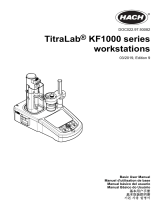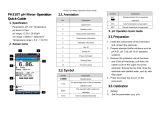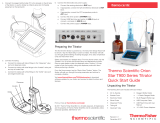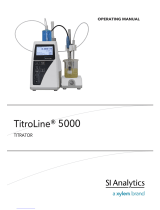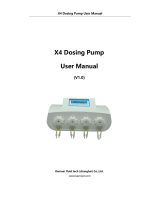
3
3
TABLE OF CONTENTS
TABLE OF CONTENTS
1. PRELIMINARY EXAMINATION ............................................................................................... 5
2. GENERAL DESCRIPTION & INTENDED USE ............................................................................. 6
2.1. PRINCIPLE OF OPERATION ......................................................................................... 6
2.2. SIGNIFICANCE OF USE ............................................................................................... 7
3. SPECIFICATIONS ................................................................................................................. 8
4. FUNCTIONAL DESCRIPTION ................................................................................................ 10
4.1. OVERHEAD VIEW .................................................................................................... 10
4.2. REAR VIEW ............................................................................................................. 10
4.3. KEYPAD DESCRIPTION ............................................................................................. 11
4.4. LCD DESCRIPTION ................................................................................................... 12
4.5. DOSING PUMP ........................................................................................................ 12
5. TITRATOR SETUP .............................................................................................................. 13
5.1. ELECTRODE............................................................................................................. 13
5.2. DOSING PUMP ........................................................................................................ 14
6. SETUP MENU ................................................................................................................... 17
6.1. CONCENTRATION UNIT ............................................................................................ 17
6.2. CALIBRATION TIMEOUT ........................................................................................... 17
6.3. pH RESOLUTION ..................................................................................................... 17
6.4. TEMPERATURE UNIT ............................................................................................... 18
6.5. TIME ...................................................................................................................... 18
6.6. DATE...................................................................................................................... 18
6.7. KEY BEEP ............................................................................................................... 18
6.8. ERROR BEEP .......................................................................................................... 19
6.9. DECIMAL SEPARATOR .............................................................................................. 19
6.10. LCD CONTRAST...................................................................................................... 19
6.11. LCD BACKLIGHT ..................................................................................................... 19
6.12. LANGUAGE ........................................................................................................... 20
6.13. TUTORIAL ............................................................................................................. 20
6.14. METER INFORMATION ........................................................................................... 20
6.15. RESTORE FACTORY SETTINGS ................................................................................. 20
7. ELECTRODE CALIBRATION .................................................................................................. 21
7.1. PREPARATION ......................................................................................................... 21
7.2. CALIBRATION PROCEDURE ....................................................................................... 22
7.3. ERROR AND WARNING MESSAGES ............................................................................ 23




















